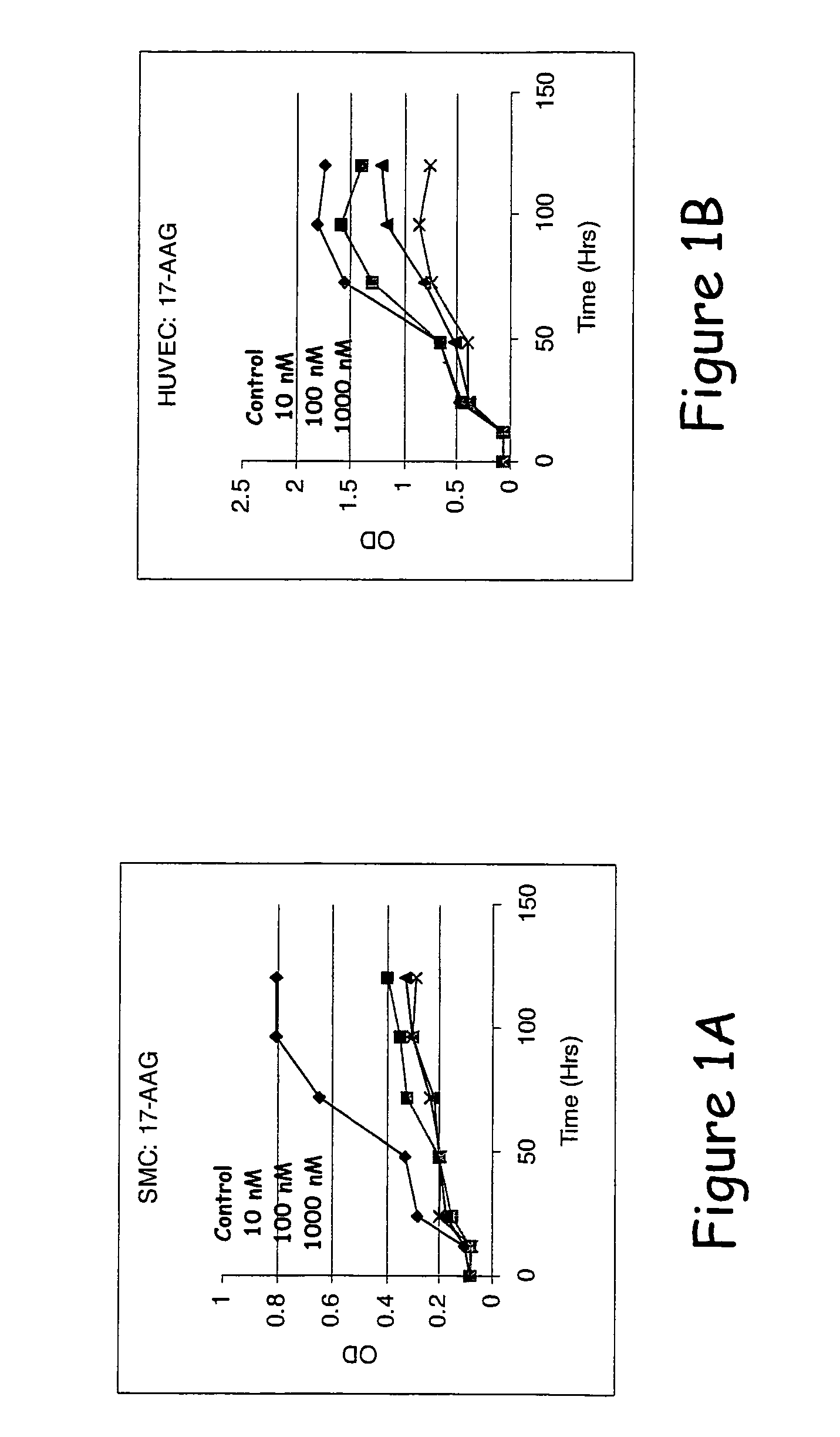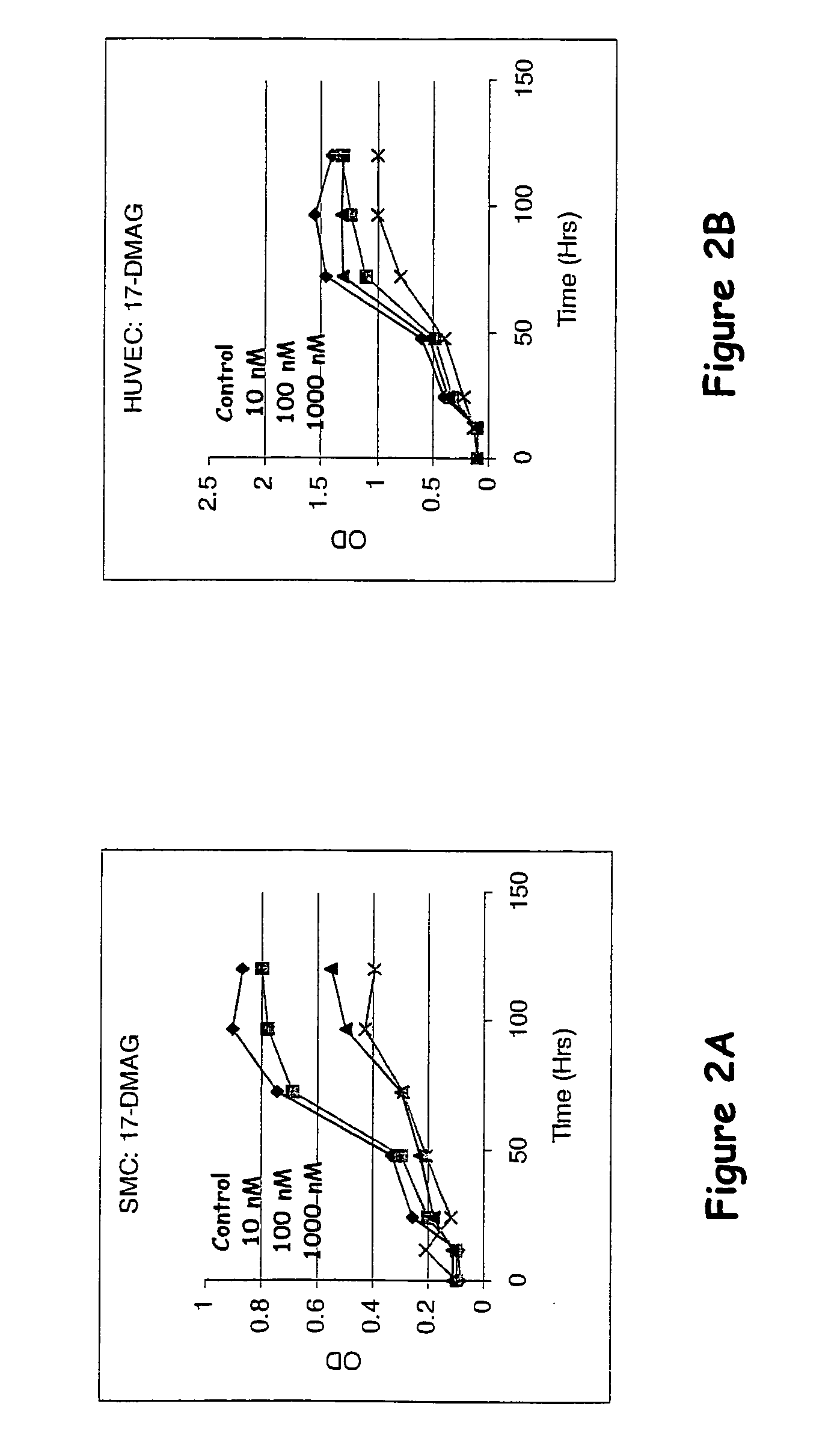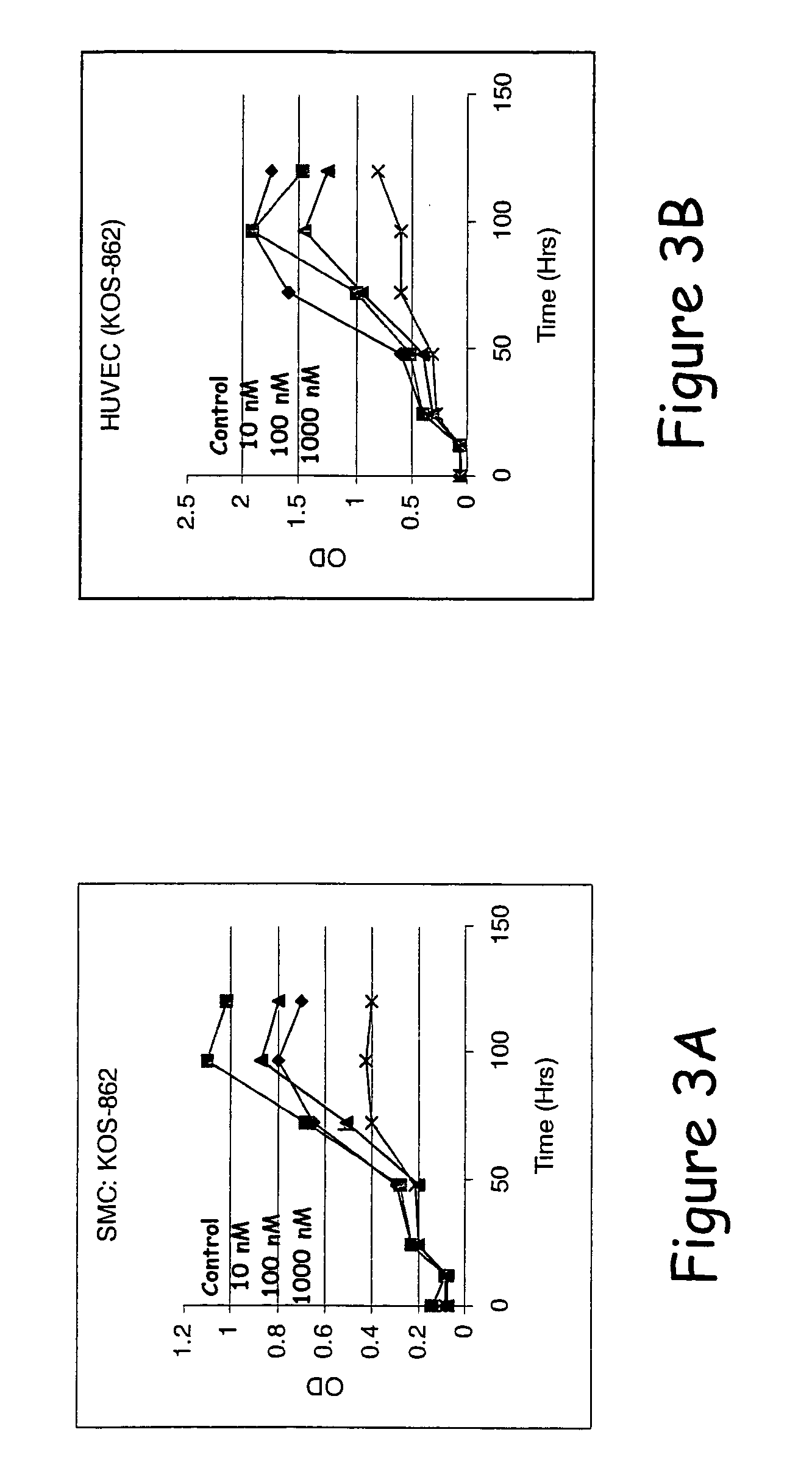Devices, methods, and compositions to prevent restenosis
a technology of cytotoxic drugs and compositions, applied in the field of medical devices and medical devices, can solve the problems of reducing the concentration of individual cytotoxic drugs needed to prevent restenosis, and achieve the effects of selective cytotoxicity, and reducing the concentration of individual cytotoxic drugs
- Summary
- Abstract
- Description
- Claims
- Application Information
AI Technical Summary
Benefits of technology
Problems solved by technology
Method used
Image
Examples
example 1
Demonstration that Compounds of the Invention Prevent or Reduce Processes Associated with Restenosis
Compounds of the invention demonstrate activities consistent with the prevention or reduction of cellular mechanisms associated with restenosis, as shown herein below. Thus, the compounds, methods, and devices of the invention will be recognized by those of skill in the cardiovascular medicine arts as being effective to substantially prevent or reduce restenosis.
The effects of varying drug concentrations of paclitaxel, rapamycin, and a drug selected from the group consisting of epothilone D, 17-AAG, and 17-DMAG on growth characteristics for the same human smooth muscle cells (“SMCs” and endothelial cells (“ECs”) were compared under in-vitro experimental conditions as described hereinbelow.
Human aortic smooth muscle cells (“AoSMCs”) and human umbilical vein endothelial cells (“HUVECs”) were plated on 96-well culture plates at a density of about 10,000 cells per square centimeter ...
example 2
Demonstration of Synergistic Effects with Anti-Inflammatory Compounds
Human aortic smooth muscle cells were obtained from Cambrex (Walkersville, Md.). The cells were maintained in SmGM-2 growth medium (Cambrex). Rapamycin, 17-AAG, and KOS-862 were obtained as described above or from commercial sources. The compounds were dissolved in dimethylsulfoxide (“DMSO”) to a concentration of 10 mM and stored at −20° C.
The cells were seeded in duplicate, in opaque-walled 96-well microtiter plates at a cell density of 3,000 cells per well and allowed to attach overnight. Serial dilutions of each drug were added, and the cells were incubated for 96 hours. The IC50 values for the drugs was determined using the CellTiter-Glo Luminescent Cell Viability Assay (Promega, Madison, Wis.), which correlates with the number of live cells.
For the drug combination assays, the cells were seeded in duplicate in 96-well plates (3,000 cells / well). After an overnight incubation, the cells were treated with d...
example 3
In Vitro Drug Elution of 17-AAG Matrixed PEA
The elution of 17-AAG from representative poly(ester-amide) coated stainless steel disks was determined by UV and HPLC methods. Stainless steel disks (0.71 cm2) were coated with polymer and 17-AAG by pipetting solutions of PEA-24-Bz and 17-AAG in absolute ethanol onto the disks and air drying overnight. In some cases, the coated disks were further topcoated with either PEA-24 or PEA-17, and then dried using the same techniques. Total drug loads of 50, 100, or 200 micrograms / cm2 were used, with a drug load of either 10 or 20% (w / w) versus polymer. For elution, the disks were placed in a 15 mL plastic vial containing 1.5 mL of medium consisting of either chymotrypsin (0.4 mg / mL), phosphate buffered saline (PBS), fetal bovine serum (FBS), or human serum. The vials were incubated at 37° C., and the medium was sampled daily. Drug release was assayed by HPLC analysis of an aliquot pretreated by solid-phase extraction (see Example 4), or by the...
PUM
| Property | Measurement | Unit |
|---|---|---|
| shape | aaaaa | aaaaa |
| concentrations | aaaaa | aaaaa |
| optical density | aaaaa | aaaaa |
Abstract
Description
Claims
Application Information
 Login to View More
Login to View More - R&D
- Intellectual Property
- Life Sciences
- Materials
- Tech Scout
- Unparalleled Data Quality
- Higher Quality Content
- 60% Fewer Hallucinations
Browse by: Latest US Patents, China's latest patents, Technical Efficacy Thesaurus, Application Domain, Technology Topic, Popular Technical Reports.
© 2025 PatSnap. All rights reserved.Legal|Privacy policy|Modern Slavery Act Transparency Statement|Sitemap|About US| Contact US: help@patsnap.com



